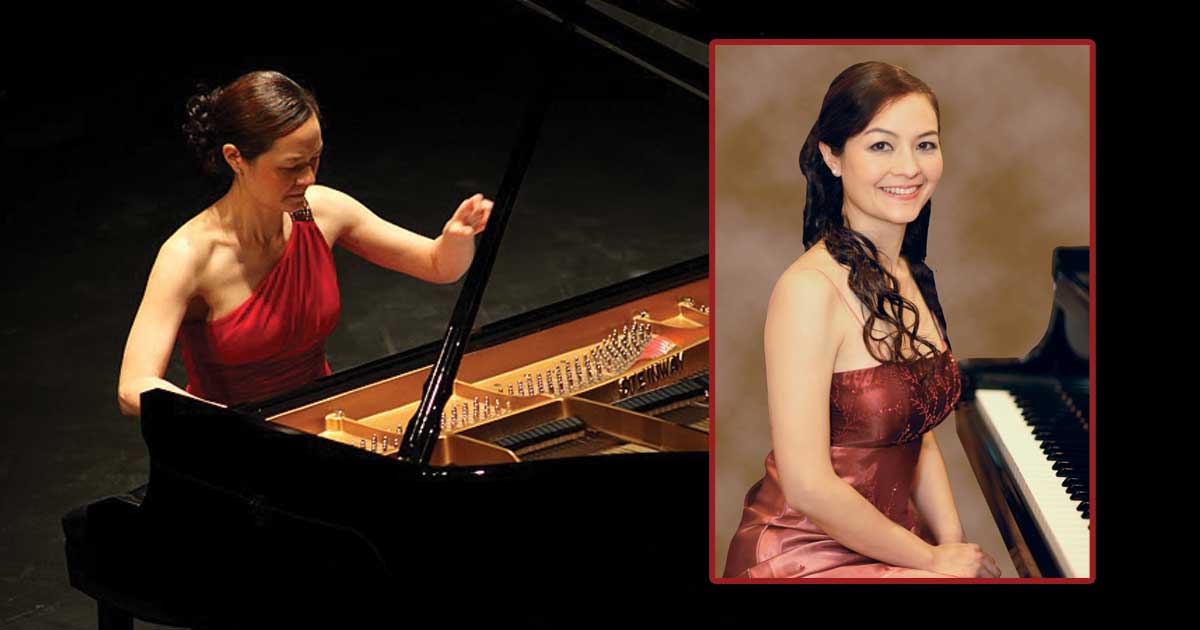
About
Renew your love of beautiful music. A holiday concert featuring Sandra Wright Shen is the perfect outing for the entire family as she plays classical compositions with a Christmas theme in addition to beloved works that bring joy all year, including the Bach Partita No. 5 and Chopin Scherzo No. 1.
A Bay Area treasure, international star, and Steinway Artist, Shen is among Silicon Valley’s most well-respected classical musicians.
Shen has thrilled audiences at Kennedy Center, Frankfurt Cultural Center, and the Forbidden City Concert Hall. She won First Prize at the International Piano Competition of France, and the Taiwan National Piano Competition. She holds bachelor’s and master’s degrees from Peabody, and is a Distinguished Visiting Professor at Furman University.
In 2017–18, Sandra Wright Shen was Artist in Residence with the Charleston Symphony Orchestra. Whenever she appears in the Bay Area, her many fans and admirers find it an occasion to reconnect with all they love in piano music. Renew the love that classical music adds to the holiday and join us.
Program
- Preambulum
- Allemande
- Corrente
- Sarabande
- Tempo di Minuetto
- Passepied
- Gigue
- In dulci jubilo: The Shepherds at the Manger
- Adeste fideles: March of the Three Holy Kings
- Scherzoso: Lighting the Candles on the Tree
- Carillon
Program Notes
This is the eighth piece in legendary pianist Leopold Godowsky’s Renaissance, a collection also known as 16 Free Transcriptions of Old Master Pieces. In adapting for piano the lovingly serene Pastorale from Arcangelo Corelli’s posthumously published Christmas Concerto (1714), Godowsky employs every pianistic device at his disposal, capturing the sense of rapture and wonder at the birth of Christ that Corelli expressed so potently some two centuries earlier.
Composed between 1825 and 1831, the six keyboard partitas were the first of Bach’s works to be published. Each partita is structured around a core of baroque dances (allemande, courante, sarabande, and gigue) with various other galanteries rounding out the set. In the G-Major Partita, a festive Preambulum precedes the Allemande, whose duple meter is enriched by triplets. The Corrente is of the swift Italian style, while pastoral thirds dominate the texture of the double-dotted Sarabande. The Tempo di Minuetto is a delicate little dance whose hemiolas (two groups of three beats replaced by three groups of two beats) add a touch of whimsy to the minuet rhythm. A joyous Passepied is followed by the fugal Gigue, whose angular theme makes for precarious passagework.
The spirit of Christmas shines merry and bright in Liszt’s 12-piece suite, Christmas Tree, written between 1873 and 1876 for his granddaughter, Daniela von Bülow. For In dulci jubilo: The Shepherds at the Manger, Liszt sets the eponymous medieval Christmas carol to a swaying pastoral rhythm. In Adeste fideles: March of the Three Holy Kings, he mixes a straightforward four-part setting of the familiar carol with ruminations upon its melodic fragments. Scherzoso: Lighting the Candles on the Tree features fleeting, elfin music in the spirit of Liszt’s own Gnomenreigen. And finally, Carillon opens with brilliant tremolos that sound like an alarm clock going off on Christmas morning, waking the children up in wide-eyed anticipation.
The Australian composer Percy Grainger was an avid collector and arranger of British folk music; he methodically recorded the origins and circumstances of each song he transcribed. Thanks to his diligence, we know that this carol, whose composer is lost to history, was written down by a Miss Lucy Broadwood in Lyne, near Horsham in Sussex. There, Christmas mummers performed the carol in 1880 and 1881 as part of the play St. George, the Turk, and the Seven Champions of Christendom. Grainger sets the mummers’ carol to a rich chordal texture similar to that of his famous arrangement of Danny Boy.
Vítezslav Novák, a Czech composer, composed largely in a Late Romantic idiom with forays into impressionism and modernism. His Songs of a Winter’s Night (1903) is a nostalgic depiction of Christmas Eve’s calm and expectation.
In 1944, three years after being released from a German concentration camp, Messiaen completed his monumental Vingt regards sur l’enfant-Jésus, a cycle of 20 movements, each meditating upon a specific aspect of the Christ Child. The 15th movement, Le baiser de l’enfant-Jésus, begins with a slow chorale that incorporates a fragment of the “Thème de Dieu,” one of the leitmotifs that pervades the entire suite. Upon repetition, the chorale is decorated with glittering passagework high in the keyboard. Only after a cadenza does the Thème de Dieu appear in its entirety, accompanied by soft, twinkling octaves and gaining new layers of figuration in each restatement. The music snowballs to a cacophonous climax before breaking into a rapturous melody representing the Kiss of the Infant Jesus. The Coda presents the Thème de Dieu for the last time, and the movement comes to a close in a blissful authentic cadence.
A.D. 1979, No. 6)
Crumb’s A Little Suite for Christmas, A.D. 1979 was inspired by Nativity frescoes in the Arena Chapel in Padua, Italy. The sixth movement, Canticle of the Holy Night, features the famous 16th-century Coventry Carol, a lullaby sung by the women of Bethlehem in response to King Herod’s Massacre of the Innocents. In his rendition of this carol, Crumb calls for the pianist to pluck and strum the strings while simultaneously depressing the keys, creating an ethereal, lutelike effect.
Chopin composed his first Scherzo in 1831, during the Polish November Uprising against the Russian Empire. Ensconced between the Presto con fuoco of the exposition and the reprise is a sublimely calm Trio based on the Polish Christmas carol Lulajze, Jezuniu (Sleep, Little Jesus).